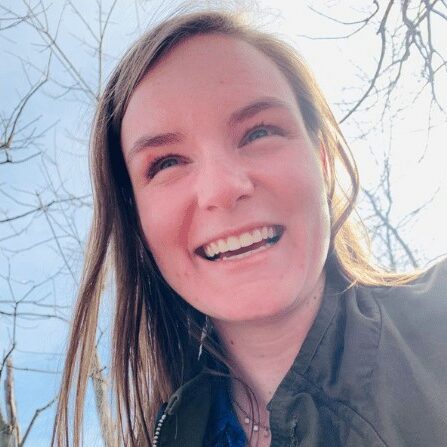Grand Nursing Theories: What They Mean for Today’s Nurses

What does it mean to be a nurse? Grand nursing theories ask questions like this, going beyond day-to-day tasks to think about the bigger picture. They help nurses understand the full scope of their practice, guiding everything from human-centered care to goals at the end of life. Grand theories in nursing offer a broad framework that shapes how nursing is practiced, studied, and taught.
What is a grand nursing theory? One way of organizing nursing theories is by scope, from general to most narrow. Grand theories are the broadest category of nursing theoretical frameworks. When considering grand nursing theories vs. middle range theories, the first offers a philosophical foundation, while the latter provides more concrete guidance. Here’s a breakdown of the three categories of nursing theory:
- Grand nursing theories provide expansive, abstract frameworks that draw from the insights and philosophies of influential nurse theorists. For example, Kurt Lewin’s change theory is a grand nursing theory.
- Middle range nursing theories bridge grand theories and hands-on practice, offering evidence-based guidance for specific patient issues, care areas, and interventions. For instance, Dorothea Orem’s self-care deficit theory falls into this category.
- Practice nursing theories are specific, focusing on direct patient care and practical outcomes in everyday clinical settings. An example is Patricia Benner’s novice to expert theory, which addresses the stages of clinical competence in nursing.
There are dozens of nursing theories currently published, and new theories are still emerging. They’re typically developed by experienced nurse-academics, like Dr. Jean Watson, Dr. Kristen Swanson, and Dr. Martha Curley.
Some of the earliest and most innovative frameworks, such as Florence Nightingale’s theory of nursing, are considered grand theories. In research, these broad concepts help guide hypotheses, structure study design, and interpret findings.
You might be wondering how grand nursing theories can be applied to your own practice. Whether you work in med-surg, surgery, ambulatory care, or another area, these frameworks can play a part in your role. To understand what grand theories mean for today’s nurses, let’s take a look at three categories of grand nursing theories.
1. Grand Nursing Theories Based on Human Needs
These theories focus on understanding and addressing the fundamental requirements for human well-being and health. They explore needs that are universal, such as the need for safety, love, self-esteem, and social engagement. Check out these examples of need-based grand theories:
Virginia Henderson: Nursing Need Theory
Henderson’s nursing need theory focuses on supporting patients to be self-sufficient and care for themselves as much as possible. Nurses facilitate patients’ rehabilitation and assist with meeting basic needs, but it is still up to the patients to do their best and care for themselves to the level they’re able.
Henderson outlined 14 areas that nurses must assist in to provide effective care:
- Breathing
- Eating and drinking
- Eliminating waste
- Moving and maintaining posture
- Sleep and rest
- Clothing and undressing
- Modifying environment and clothing for body temperature regulation
- Body hygiene for skin integrity
- Avoiding injury to self and others
- Communicating emotions, needs, fears, and opinions with others
- Worshiping within one’s faith
- Working and achieving a sense of accomplishment
- Play and recreation
- Learning, discovery, and satisfying curiosity
Example: For this grand theory in nursing, imagine you have a patient who’s recovering from hip surgery. You recognize that they’ll need assistance with going to the bathroom, bathing, dressing, and moving for the first days or weeks. But while you know you need to help the patient with these tasks, you also know that they will eventually need to be discharged to their home. Your task as a nurse is to meet these acute needs, while also encouraging the patient to care for themselves.
Shirley Moor and Cornelia Ruland: Peaceful End of Life Theory
Patients who are in the last weeks or days of life have different needs than the rest of the patient population. How do nursing care goals change for these patients? A concept that underpins this theory is that patients in this stage should be supported to experience the best version of life possible for them. Moore and Ruland’s theory defines five areas of support that nurses provide to terminally ill patients. These include the following:
- Being free from pain
- Experiencing comfort
- Dignity and respect
- Being at peace
- Experiencing a closeness with significant others and those who care
Example: You’re caring for a patient who is in hospice for liver failure. This patient is requesting a glass of wine with their dinner, and while you know that this could worsen their health status, you also know that they may not have much longer to live. Giving them agency in this decision, and empowering them to make their own choices, is applying the peaceful end of life theory.
2. Grand Nursing Theories Based on Unitary Process
You are a part of your environment, according to the unitary perspective. This framework posits that people and their surroundings are integral to each other. Within this nursing grand theory, the nurse and patient are inseparable — you can’t be a nurse without patients, and people can’t be patients without nurses to provide care. Below are two examples of theories stemming from the unitary process.
Martha Rogers: Science of Unitary Human Beings
In her science of unitary human beings theory, Martha Rogers envisions nurses not as independent beings but as systems within systems. A nurse participates in care systems and therefore is part of care.
Rogers was a revolutionary nursing thinker who railed against the use of nursing diagnoses, because she felt that these static terms didn’t suit the dynamic process of patient care. The concept of nursing interventions also went against her unitarian perspective — after all, it’s impossible to intervene when two things are joined.
Example: Rogers’ theory may seem abstract, but it can become clearer when you consider your experiences with patients. Have you ever felt changed after caring for someone who left an impact on you? Or maybe you’ve worked with a colleague who made you feel inspired or motivated. In your work as a nurse, you are constantly giving and receiving, exchanging information and energy. Your inner world is deeply influenced by the systems that you exist in, and vice versa.
Martha Newman: Health as Expanding Consciousness
Imagine it’s a year from now — is your health different? Maybe you’ll have picked up a new sport for a hobby, found a new park you enjoy walking in, or taken up journaling. Health, just like life, is constantly changing. Newman’s theory states that people experience health as a continuous growth process that expands consciousness and deepens understanding of the self. And when nursing care is successful, both the nurse and patient experience this expansion.
Example: Under Newman’s theory, a patient with diabetes is not just suffering from blood sugar issues but also has an opportunity to learn more about their body and nutritional needs. The nurse caring for this patient might take this opportunity to explore this patient’s relationship with foods. Thus, healthy hemoglobin A1c goal-setting also creates a strategy to track healthy habits and personal growth. Even though the patient likely would not have asked to be diagnosed with diabetes, the experience can deepen their knowledge of their own body.
3. Grand Nursing Theories Based on Interactive Process
One of the first things you do when you meet a new patient is introduce yourself, beginning the nurse-patient relationship. Interactive process theories view this relationship as the basis for nursing care — in other words, your work has a major impact on the patient experience. Check out these examples of grand nursing theories that are built on the foundation of the interactive process:
Erickson, Tomlin, and Swain: Modeling and Role-Modeling Theory
The modeling and role-modeling theory encourages nurses to use their empathy to try to see the world from the patient’s perspective. The theory of modeling and role-modeling revolves around two concepts:
- Modeling is the nurse’s attempt to imagine a patient’s worldview and experience.
- Role-modeling is when a nurse helps the patient make a plan for health.
Example: You’re caring for a patient who has been newly diagnosed with heart failure. In your first few conversations with them, you might spend time asking them questions and growing to understand their perspective and the barriers they face. You might try to think about what it would be like to be in the same situation yourself and the strategies you might use to cope. Combining this empathy and your clinical knowledge, you can develop a plan that addresses the patient’s needs and health goals.
Jean Watson: Caring Theory
When you care for a patient, you’re not just caring for their body but also for their soul, according to Jean Watson. And you as a nurse are more than your credentials — you’re a human, caring for another human. Watson believes that caring for others is the core of nursing practice and that, to care for patients, nurses accept them as they are and help promote their potential. There are three areas of caring theory:
- Humans are multidimensional, greater than the sum of their parts. They must be respected, cared for, assisted, and nurtured.
- Health is not simply the absence of illness or disease, but is found when mental, physical, and social systems function highly.
- Nursing is a profession focused on health-illness that is mediated by personal, professional, scientific, and ethical interactions.
Example: Imagine you work in an outpatient psychiatric clinic and a patient you’re caring for is struggling with side effects from lithium. They know they need to stick with their medication regimen to stay out of the hospital, yet they hate feeling this way. Using Watson’s theory, you try to understand their experience and consider ways to not just help them stay on their medication, but also improve their health status and outlook. You can support this patient not only as a nurse, but also as a listening ear.
Go From Theory to Practice
Grand nursing theories can help you see nursing differently. Have you been theorizing what it would be like to work in a new area or specialty? IntelyCare has fresh opportunities for nursing professionals across the country. Sign up for job notifications to learn more about opportunities near you.




